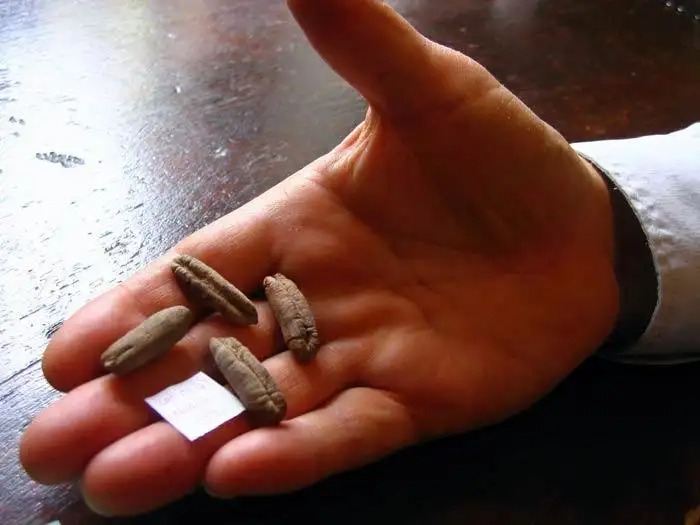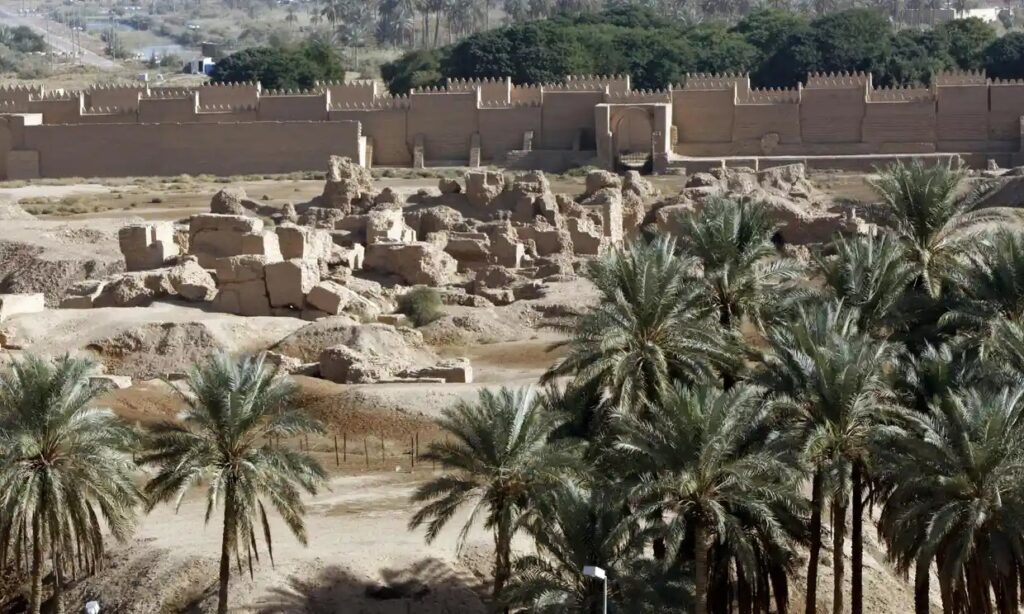
The seeds discovered in the Judean desert are both male and female, raising the prospect of producing dates.
Researchers have successfully planted and grown a handful of date seeds from fruit that ripened around the time of Jesus in southern Israel.
The seeds, known as Adam, Jonah, Uriel, Boaz, Judith, and Hannah, were discovered among many others at archaeological sites in the Judean desert.
It is not the team’s first time growing ancient seeds: in 2008, they reported germinating a 1,900-year-old Judean date palm seed from Masada, an ancient site extended by Herod the Great in the first century BC that overlooks the Dead Sea. That plant, a male, was named Methuselah after the Bible’s oldest character.
However, the new study goes further, involving not only more seeds, but also shedding light on how Judean farmers may have cultivated the famous plants.

With the newly germinated seeds containing females, the team hopes to apply Methuselah’s pollen to Hannah, which is expected to produce a flower within the next two years, with the goal of producing dates.
However, it may not be a true resurrection.
“It won’t be a typical Judean date,” Dr Sarah Sallon, director of the Louis Borick Natural Medicine Research Centre at the Hadassah Medical Organization in Jerusalem, explained. “They’re clones from very high-producing females.”
Date palms are thought to have been cultivated for the first time more than 6,000 years ago in Arabia and Mesopotamia (now Iraq), and were once common in ancient Judea, a region of the Levant. They were used to treat a variety of medical conditions, including depression and poor memory, in addition to being an important food item, according to Sallon. “Dates were a huge export from Judea, and they were famous,” she explained.

From Pliny the Elder to Herodotus, writers extolled the virtues of Judean dates, such as their long shelf life, which allowed them to be transported far and wide. “Every year, Herod would present them to the emperor in Rome,” Sallon explained.
However, the plants suffered from centuries of unrest, and by the nineteenth century, the plantations had vanished.
Sallon and colleagues describe how they planted 32 Judean date palm seeds retrieved from archaeological sites throughout the Judean desert in the journal Science Advances. These include Masada and the Qumran caves, which are best known for hiding the Dead Sea Scrolls but were also used by refugees in ancient times.
“I spent hours and hours picking through the best seeds in the archaeology department,” Sallon explained. “A lot of them had holes in them from insects or had fallen apart, but some were really pristine, and I chose the best ones.”

Six of the seeds germinated. Hannah and Adam were discovered to be between the first and fourth centuries BC, based on radiocarbon dating of shell fragments left after germination. Uriel and Jonah were dated to somewhere between the first and second centuries AD, while Judith and Boaz were dated to a 200-year period beginning in the mid-second century BC.
“I’m Jewish, so I gave them Jewish names,” Sallon explained, adding that Adam was named Eve before the sex of the plants was determined through genetic analysis.
Some seeds sprouted in weeks, while others took half a year. “We were about to give up when they appeared,” she explained.
The ancient date seeds were discovered to be larger than those of modern cultivated date palms and wild plants. “Today’s seeds are still about 30% smaller than what grew in Judea 2,000 years ago,” Sallon explained.
Genetic analysis revealed that the older the ancient seeds, the more “eastern” their genetic makeup appeared to be: Adam and Methuselah are most similar to modern-day Gulf varieties.
According to Sallon, this could be due to the type of trees that grew naturally in Judea at the time, or they could have been brought up the Red Sea from Arabia via an ancient trading route. Hannah and Judith are more similar to modern Iraqi varieties, which Sallon believes may be related to the return of Jews from Babylonian exile in the late sixth century BC, many of whom had worked on Babylonian date plantations and may have brought plants back with them.
Meanwhile, Uriel, Boaz, and Jonah received a significant genetic contribution from varieties west of Egypt and were most genetically similar to modern Moroccan varieties. “The Roman occupation [of Judea] began in the first century, and it is possible that they were bringing date varieties in from North Africa at the time,” Sallon explained.

Interesting.
I love reading your finds. Very inspiring and informative. Keep them coming.
A wonderful and very interesting story. Thank you so much.
I knew about Methuselah but not about these other sprouts. Good luck with cross pollinization. I wouldn’t want to be the gardeners responsible for taking care of such rare plants!
So very interesting. I am sure God is smiling.
Fascinating and hopeful that seeds can survive that long and be viable.
Apparently when Howard Carter opned up the tomb of Tutankamoun in 1925, along with all the silver and gold etc there was a jat containing ears of wheat. Scientists planted them and they grew up to produce fresh ears. SAdly there were not enough for them to make bread from, though they didi have a small amount of flour…..